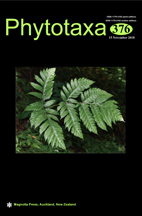Abstract
Juglans regia commonly known as Persian walnut of the genus Juglans (Juglandaceae) is cultivated throughout the temperate regions of the world for its high quality wood and edible nuts. Though Persian walnut grows on 70,000 ha in Iran, we have no detailed information on genetic structure of walnut cultivars in the country. A detailed knowledge of genetic diversity and spatial genetic structure is essential for conservation and management of tree species. The species like Persian walnut, which has wide range of geographical distribution, should harbor extensive genetic variability to adapt to environmental fluctuations they face. Therefore, detailed population genetic study of local populations become important for conservation and breeding studies. The main aim of the present study was to investigate the population genetic structure of seven Persian walnut populations including 3 wild and 4 cultivated populations by using ISSR and SRAP molecular markers. We also aimed to compare the genetic variability revealed by ISSR neutral multilocus marker and nrDNA ITS sequences. Finally, we tried to investigate the species relationship within the genus Juglans L. by using molecular phylogeny methods based on nrDNA ITS sequences. The results showed that both multilocus molecular markers and ITS sequences can differentiate Persian walnut populations. The studied populations differed genetically and showed isolation by distance (IBD).

